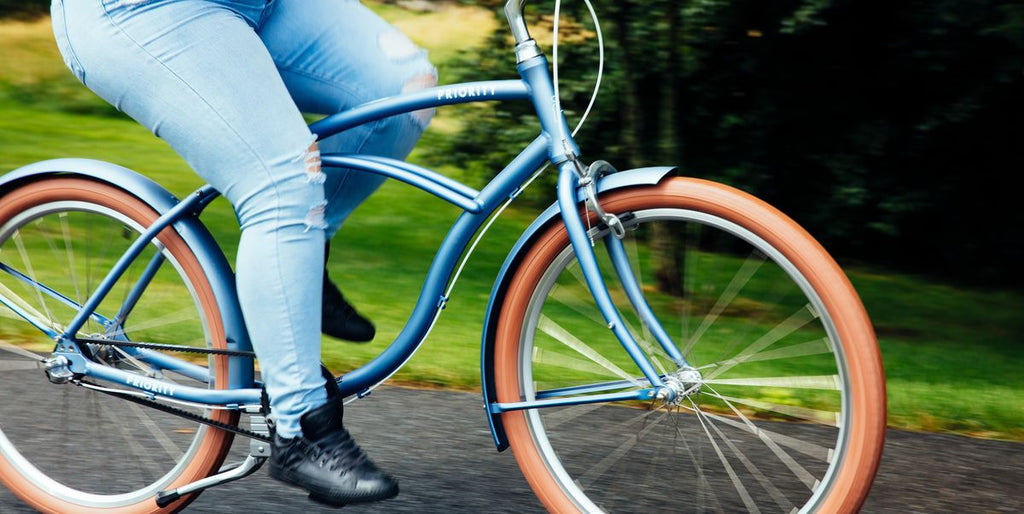Is Fat Biking a Superior Aerobic Exercise Compared to Regular Bicycles?
Fat bike has gained popularity in recent years as an adventurous outdoor activity. With its oversized tires designed for navigating through challenging terrains, fat biking offers a unique experience for cyclists. But how does fat biking fare in terms of aerobic exercise compared to regular bicycles? In this article, we'll delve into the science behind fat biking as an aerobic exercise, explore its calorie expenditure compared to traditional biking, and present findings through data visualization.
Fat Biking is A Unique Form of Aerobic Exercise: Fat biking involves riding bicycles equipped with oversized tires, typically ranging from 3.8 to 5 inches in width. These wide tires allow cyclists to traverse diverse terrains such as snow, sand, mud, and gravel, making fat biking a versatile outdoor activity. Unlike traditional bicycles, fat bikes provide increased stability and traction, enabling riders to tackle challenging surfaces with ease.
Calorie Expenditure in Fat Biking: The calorie expenditure during fat biking varies depending on various factors, including intensity, duration, terrain, and individual characteristics such as weight and fitness level. Studies have shown that fat biking can burn a significant number of calories due to the increased resistance encountered when riding on soft or uneven surfaces.
Real cycling data detection and analysis
To illustrate the calorie expenditure in fat biking compared to regular bicycles, let's examine a hypothetical scenario:
Data source visualization: We choose the same road and use three types of bicycles to detect the calories burned. The ride time is one hour each. The source of calorie data is the Apple smart watch.
| Activity | Fat Biking | Mountain Biking | Paved Road Biking |
| Day 1(kcal/hr) | 857 | 473 | 336 |
| Day 2 | 790 | 500 | 350 |
| Day 3 | 803 | 463 | 379 |
| Day 4 | 651 | 479 | 389 |
| Day 5 | 769 | 493 | 381 |
| Day 6 | 599 | 439 | 377 |
| Day 7 | 640 | 448 | 353 |
| Day 8 | 685 | 499 | 361 |
| Day 9 | 703 | 481 | 358 |
| Day 10 | 751 | 502 | 420 |
Based on the provided data, we can observe the average calorie expenditure per hour for three different cycling activities (Fat Biking, Mountain Biking, Paved Road Biking) over the past 10 days. During this period, Fat Biking exhibited the highest average calorie expenditure per hour, ranging from approximately 700 to 800 calories. Mountain Biking showed a slightly lower average calorie expenditure, ranging between 400 to 500 calories. Meanwhile, Paved Road Biking displayed the lowest average calorie expenditure, ranging from 300 to 400 calories. Overall, these data indicate the varying levels of calorie expenditure associated with different cycling activities. Fat Biking typically demands more physical exertion and energy due to riding in more challenging terrains. On the other hand, Mountain Biking and Paved Road Biking, while still requiring some calorie expenditure, offer lower intensity options suitable for cyclists of different fitness levels and preferences.

Should I choose a fat bike as my exercise bike?
Fat Tire Bikes have advantages but also drawbacks to consider: heavier weight, higher rolling resistance, lower efficiency, and limited applicability on flat roads compared to traditional bikes
Choosing between a Fat Bike or a traditional Mountain Bike or Road Bike depends on your personal preference, riding needs and expected riding environment. Here are some considerations:
Riding environment: If you often ride on complex terrain such as rugged mountains, snow or sand, a Fat Bike may be a better choice because its wide tires provide better flotation and traction, making it easier for you Travel through these challenging terrains. However, if you mainly ride on flat roads, a traditional road bike may be more suitable as it is lighter and requires less effort.
Purpose of riding: If you pursue adventure and exploration and like to challenge yourself on various terrains, then choosing a Fat Bike may be more satisfying. Fat Bike allows you to explore more places, including snow, sandy beaches and rugged mountains. The Mountain Bike is a more versatile option, suitable for riding in mountains, forest trails and technical single tracks. And if your goal is to ride long distances or participate in road races, a traditional road bike may be more suitable for you.
RIDING COMFORT AND STABILITY: The Fat Bike’s wide tires provide better stability and comfort, especially when riding on unstable terrain. In comparison, traditional mountain bikes and road bikes may go faster but may feel unstable on rough terrain.
Conclusion: Fat biking offers a unique and challenging form of aerobic exercise, with the potential to burn a substantial number of calories. While traditional biking remains a popular choice for cardiovascular fitness, fat biking provides an alternative option for outdoor enthusiasts seeking adventure and exploration. Whether you're gliding through snow-covered trails or cruising along paved roads, both fat biking and traditional biking offer valuable health benefits and enjoyable experiences for cyclists of all levels.









